I was already familiar with Sugimoto’s work at the start of this project but I wasn’t sure what process he underwent to create his prints. I found a video where he demonstrates his technique using various electrodes attached to a Van de Graaff generator. I watched this video a few times and paused it a various sections to try and work out exactly how he was creating his prints.

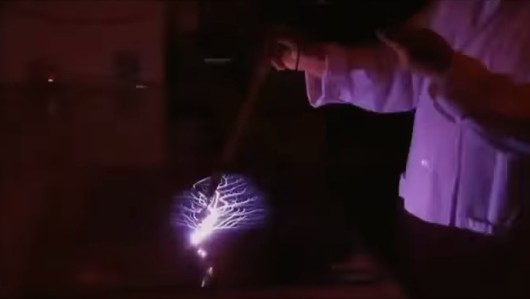
My first thought for research was to look for other photographers/artists that use electricity to create art. I spent some time scouring through Google results and found three other people that have used similar techniques to create their artwork. Out of the three I found, two were from the 1800’s and captured some of the first images of electricity, while the other was a jewelry designer and artist whose images were created in the last few years.
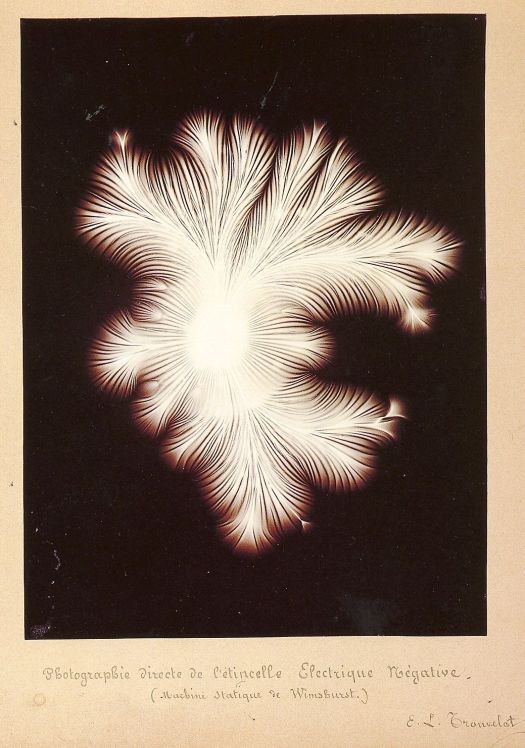
The earliest example I could find was by a French artist/astronomer called Étienne Léopold Trouvelot in the late 1880’s. These were the first photographic images of electric sparks and were named Trouvelot figures. They were created using the voltage from a Wilmhurst Machine which had only been invented a few years prior. The machine operates using the same principle as a Van de Graaff generator, only a more primitive design. One of the things that intrigued me about this print is how the electricity flowed and seemed to bend. In Sugimoto’s prints it seemed to travel in jagged, broken lines fracturing off into different branches each time it’s path changed.
The handwritten annotation below the print roughly translates to:
“Direct Photography of the Spark. Electric Negative.”
(Wilmhurst Static Machine)
E.L.Trouvelot
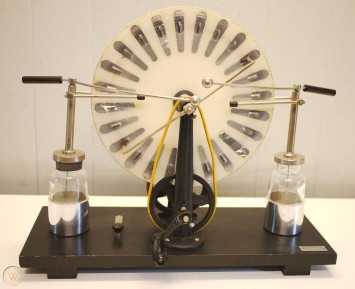
I haven’t been able to find any information on how Trouvelot used the machine, what sorts of film/paper chemistry or how he transferred the voltage across to the film/paper. It would also be interesting to find out the difference in voltage output between Wilmhurst machines and Van de Graaff generators.
The second example of this technique being used was by a Scottish electrical engineer called Alan Archibald Campbell-Swinton. His work was created a few years later in the early 1890’s and was inspired by the work of Trouvelot. Swinton’s process was slightly different as he captured his sparks on glass plates. Other than that I haven’t been able to find out any further insights into how he created his prints.
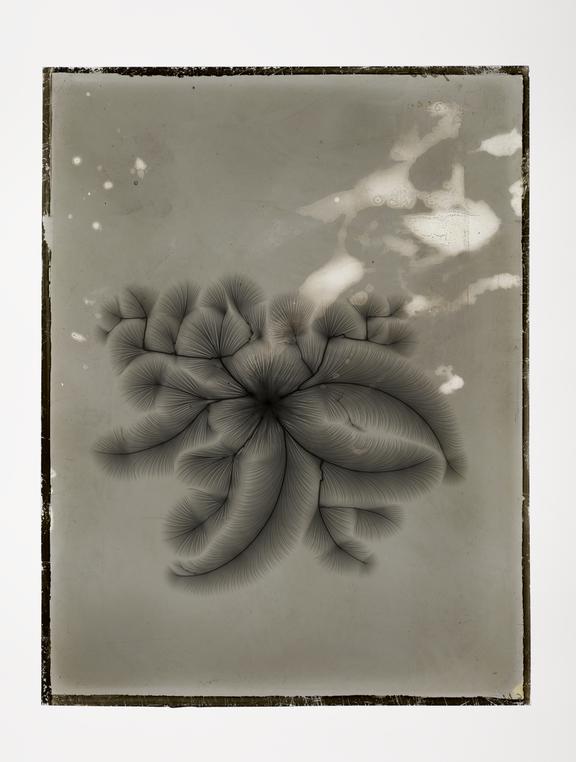
Swinton’s background as an electrical engineer would have given him a better understanding of the theory behind how the Wilmhurst machine that created the sparks worked, possibly allowing him to modify/tune it for better results. He was also a pioneer in X-ray technology, opening the first Radiography lab in the UK a couple of years later. This experience with fixing X-ray images onto glass plates would have allowed him to capture incredibly highly detailed negatives of these sparks. Unfortunately I have only been able to find two of his images, although both in negative and positive format. Both glass plates are currently held by the Science Museum in London, while the positives made from these plates are in the National Media Museum in Bradford.
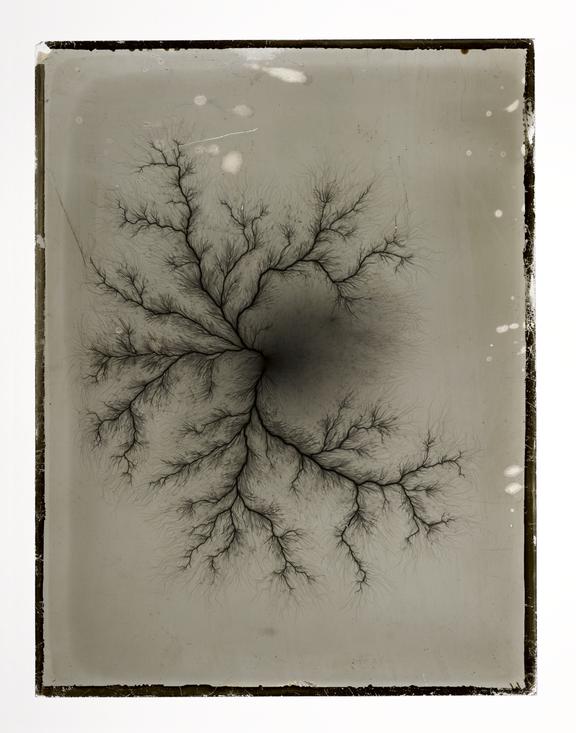
Although both Trouvelot and Swinton’s prints are incredibly highly detailed, they were all created in the 1800’s. This means they’re quite rare and there is almost no documentation available as to exactly how they used their machines to create these negatives. I decided to have a look at the artist that has been using this technique over the last couple of years. I wanted to see if digital could compete with the overall resolution of the glass plate sparks. I also wanted to find out if modern advancements in electrical technology had been utilised to build on the findings of Trouvelot and Swinton.
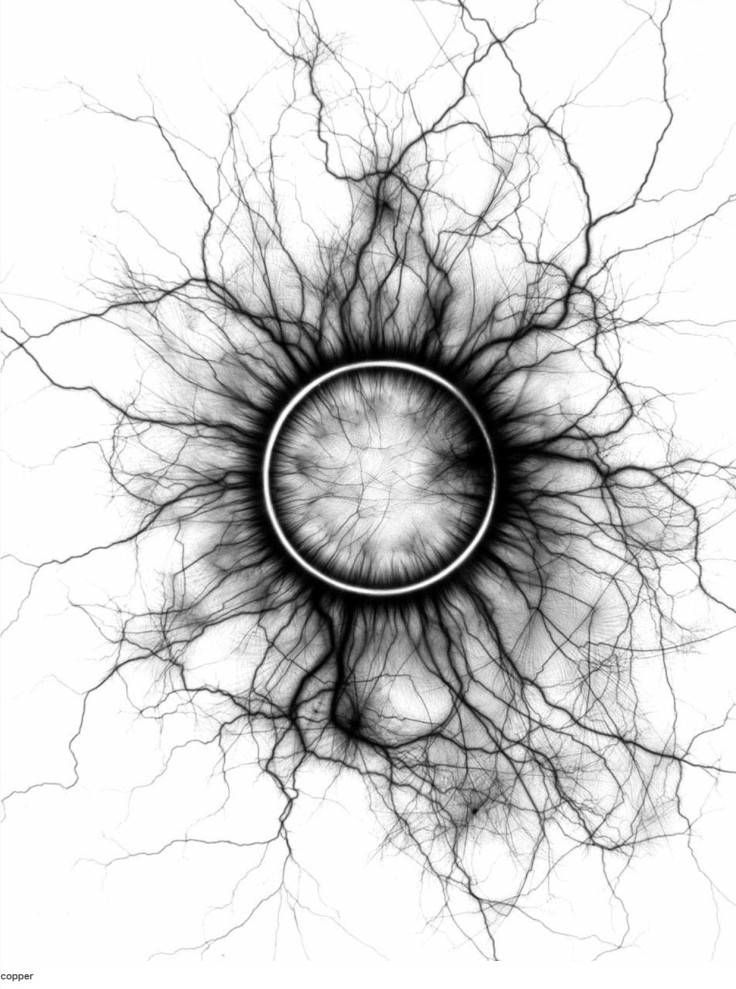
The image above was captured by jeweler and artist Sean O’Connell, it shows a copper ring with a high voltage being passed through the surface and onto the paper/film. O’Connell’s interest in this process came from his background as a jeweler and his use of many different materials. He created a series of 14 images of rings, each made from a different material. Some more common materials likely to be found in jewelry such as gold, silver and wood as well as more unusual materials like meteorite, tantalum and wax.
The more conductive the material, the easier the charge flows through. Therefore the conductive materials have big fractal forks filling up the whole sheet of film, whereas the less conductive materials like the meteor and wax are only able to transfer small amounts of the charge to the film.
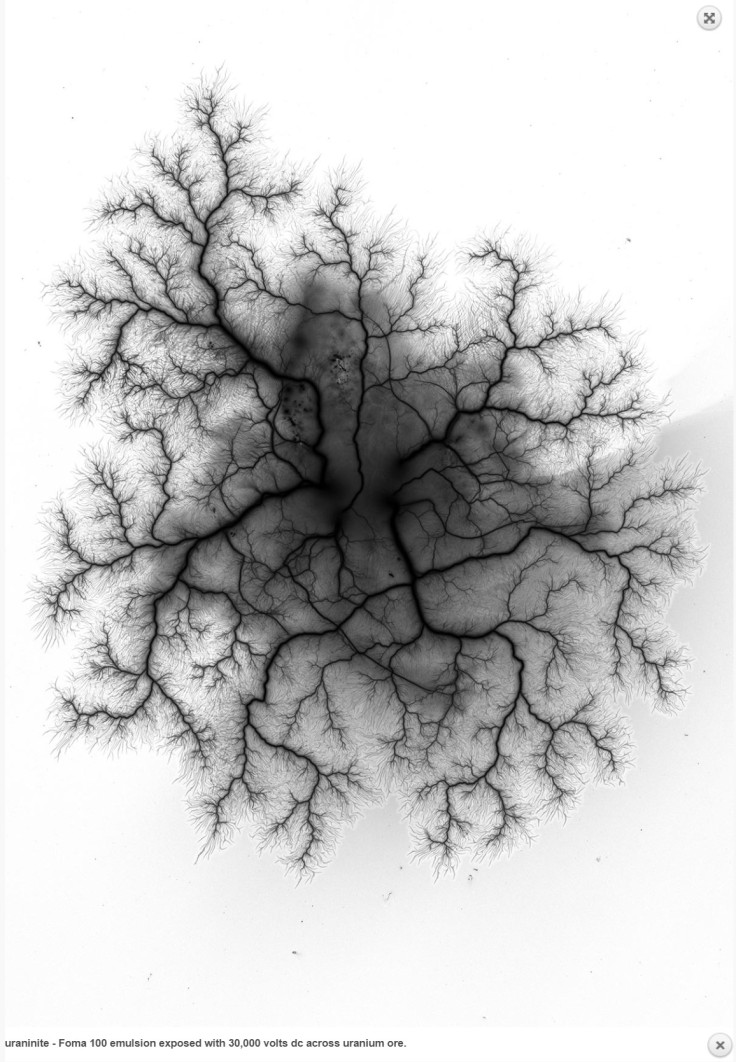
O’Connell also found that using the ore from these metals in powder form would allow him to create these completely organic, abstract depictions of the electrical charge flowing through these metal ores.
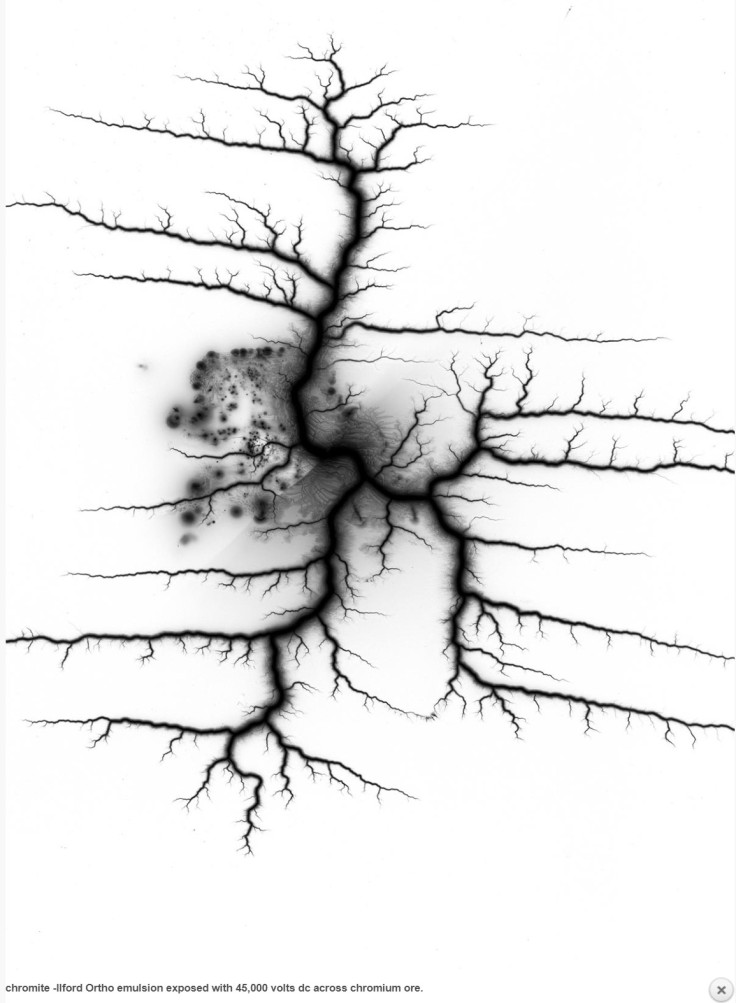
I also noticed in one of the articles it mentioned that he used a custom made machine to create his sparks. I did a bit more digging to try and find a description of this machine, however I was only able to find a photo of it in the background.

The original photo was a bit dark, I raised the shadows in Photoshop so I could see more of his machine and wiring setup.
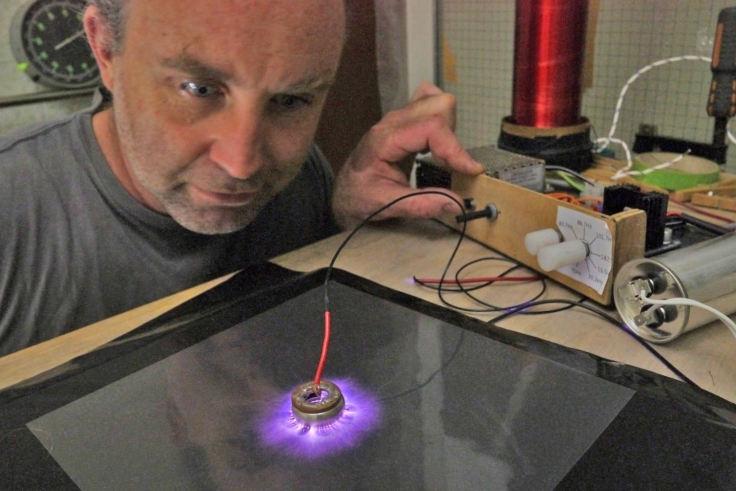
The first thing I noticed was the white dial on the right of the machine, this dial is labelled with different frequencies (80.7Hz, 86.7Hz, 101.7Hz etc.) This suggests that he is able to adjust the power or intensity of the voltage output by simply turning a dial. Also the red cyclinder in the background looks a lot like copper wire wrapped around a tube, which means he is probably using a custom variant of a Tesla Coil.














A good piece of investigative research, the explanation into O’Connell’s work is interesting. Nice one…
LikeLike